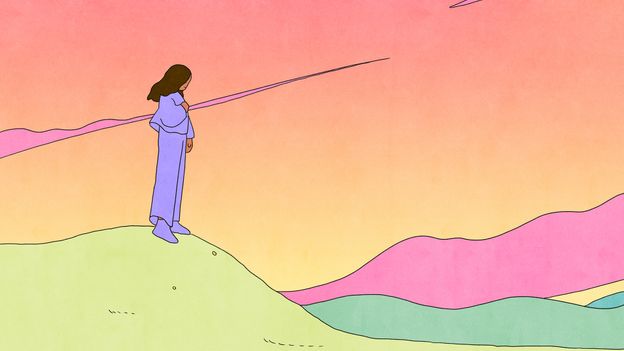
As Daisetz T Suzuki writes in Zen in the Japanese Culture: “A haiku does not express ideas but… puts forward images reflecting intuitions. These images are not figurative representations made use of by the poetic mind, but they directly point to original intuitions, indeed they are intuitions themselves.” The suggestion is that the composition of haiku is so intuitive, it is almost unconscious.
Haiku and their close attention to the details of nature are part of the wider Japanese concepts of , which roughly translated equate to a sense of meaning and harmony. “[Haiku] gives us an insight into why the word ikigai exists in Japanese,” writes Yukari Mitsuhashi in Ikigai: Giving Every Day Meaning and Joy. “In our everyday lives, whether we are immersing ourselves in nature or devouring traditional Japanese food, paying attention to detail grabs our focus on to what is right in front of us, instead of wondering about our to-do lists in our head… permitting us to find joy and ikigai in simple, everyday things.”
And the principles of haiku can be calming when applied to other areas of life, too. In his book Goodbye Things, Funio Sasaki writes: “Traditional paintings have few figures in them and value negative space. Japanese calligraphy and brush paintings are in black and white. Haiku is the shortest poem form in the world. These are a few examples of a minimalistic aesthetic in Japanese art and culture.” In the book, Sasaki, like Bashō all those centuries before, decides to give away most of his possessions, and explores the feeling of calm and tranquillity that results: “There are more things to gain from eliminating excess than you might imagine: time, space, freedom, and energy, for example.”
Find your flow
Calmness is regarded by some with suspicion – is a state of calmness really just a state of passivity? A surrender of engagement, giving up, or, worse, a sociopathic disconnection?
But being calm need not equate with being passive or numb. When we’re absorbed in something we love – music, gardening, drawing, knitting, writing, whatever it is – we can enter an almost trance-like state of calm, mesmerised by what we are doing. As Mitsuhashi argues in her book about ikigai, immersing ourselves in nature or a particular activity makes us focus on what is in front of us, freeing up our minds from other things, and enabling us to find peace.
In her classic work The Artist’s Way, Julia Cameron encourages the reader to “make a commitment to quiet time”. She writes: “Creativity occurs in the moment, and in the moment we are timeless”.
And author Mihaly Csiksezentmihalyi argues that what really makes us feel not only calm and peaceful, but also glad to be alive, is unlocking a more fulfilling state of being. He calls this state of mind “flow”. In his book Flow: The Psychology of Happiness, he throws light on the idea that many philosophers before him have posited – that the way to peace doesn’t lie in mindless detachment, but in mindful challenge. Each of us finds our flow in different ways, and our sense of calm.